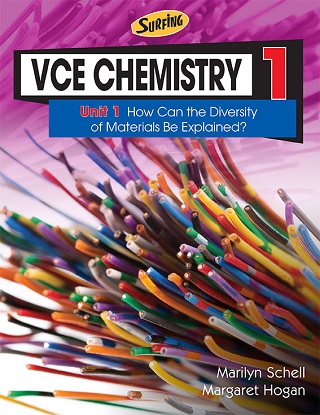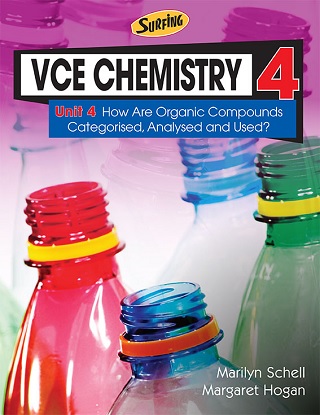VCE Surfing Chemistry Unit 3
- Marilyn Schell, Margaret Hogan
- Science Press
- 2017
- ISBN: 9780855837556
RRP: $49.95 (Inc. GST)
Out of stock

Description
This book covers the Chemistry content specified in the Victorian Certificate of Education Chemistry Study Design.
Sample data has been included for suggested experiments to give you practice to reinforce practical work in class.
Each book in the Surfing series contains a summary, with occasional more detailed sections, of all the mandatory parts of the syllabus, along with questions and answers.
All types of questions – multiple choice, short response, structured response and free response – are provided.
Questions are written in exam style so that you will become familiar with the concepts of the topic and answering questions in the required way.
Answers to all questions are included.
A topic test at the end of the book contains an extensive set of summary questions. These cover every aspect of the topic, and are useful for revision and exam practice.
Table of Contents
Introduction
Words to Watch
Area of Study 1 What Are the Options for Energy Production?
Obtaining Energy From Fuels
1 Fuels
2 Energy and Chemical Reactions
3 Combustion
4 Thermochemical Equations
5 Behaviour of Gases
6 Gas Laws
7 Molar Volume
8 Calculations Using Gas Laws and Molar Volumes
9 Stoichiometry Calculations
10 Stoichiometry Calculations Using Volumes
11 Enthalpy Change Calculations
12 Measurement of Enthalpy of Combustion
13 Revision of Obtaining Energy From Fuels
Fuel Choices
14 Fossil Fuels
15 Fractional Distillation
16 Fractional Distillation of Crude Oil
17 Biofuels
18 Biogas
19 Bioethanol and Biodiesel
20 Products of Combustion of Fuels
21 The Greenhouse Effect
22 Comparing Fossil Fuels and Biofuels
23 Petrodiesel and Biodiesel as Transport Fuels
24 Revision of Fuel Choices
Galvanic Cells As a Source of Energy
25 Redox Reactions
26 Reducing and Oxidising Agents
27 Types of Redox Reactions
28 Galvanic/Voltaic Cells
29 Galvanic Cells Make Electricity
30 Batteries
31 The Redox Table
32 Calculating Cell Potentials
Fuel Cells As a Source of Energy
33 Fuel Cells
34 Fuel Cells and Combustion of Fuels
35 Fuel Cells Versus Galvanic Cells
36 Revision of Galvanic Cells and Fuel Cells As a Source of Energy
Area of Study 2 How Can the Yield of a Chemical Product Be Optimised?
Rate of Chemical Reactions
37 Collision Theory
38 Activation Energy
39 Energy Profile Diagrams
40 Rates of Chemical Reactions
41 Corrosion – A Slow Reaction
42 Reaction Rate and Concentration
43 Experiment on Reaction Rate and Concentration
44 Reaction Rate and Temperature
45 Reaction Rate and Pressure
46 Reaction Rate and Surface Area
47 Reaction Rate and Catalysts
48 Enzymes
49 Revision of Rates of Chemical Reactions
Extent of Chemical Reactions
50 Chemical Systems
51 Equilibrium
52 Explaining Equilibrium
53 Changing Equilibrium
54 Equilibrium and Temperature
55 Equilibrium and Concentration
56 Equilibrium and Pressure
57 Le Châtelier’s Principle
58 Equilibrium Graphs
59 Modelling Equilibrium
60 Equilibrium Constants
61 Calculating K Values
62 Equilibrium in Industry – Ammonia Production
63 Equilibrium Around Us
64 Revision of Extent of Chemical Reactions
Production of Chemicals by Electrolysis
65 Electrolysis
66 Electrolytic Cells
67 Electrolysis of Sodium Chloride
68 Sodium Hydroxide
69 Electrolysis and the Electrochemical Series
70 Comparing Electrochemical Cells
71 Stoichiometry and Faraday’s Laws
72 Revision of Production of Chemicals by Electrolysis
Rechargeable Batteries
73 Recharging Batteries
74 Investigations
75 Revision of How Can Chemical Processes Be Designed to Optimise Efficiency
Topic Test
Answers
Data Sheet
Periodic Table
Index




